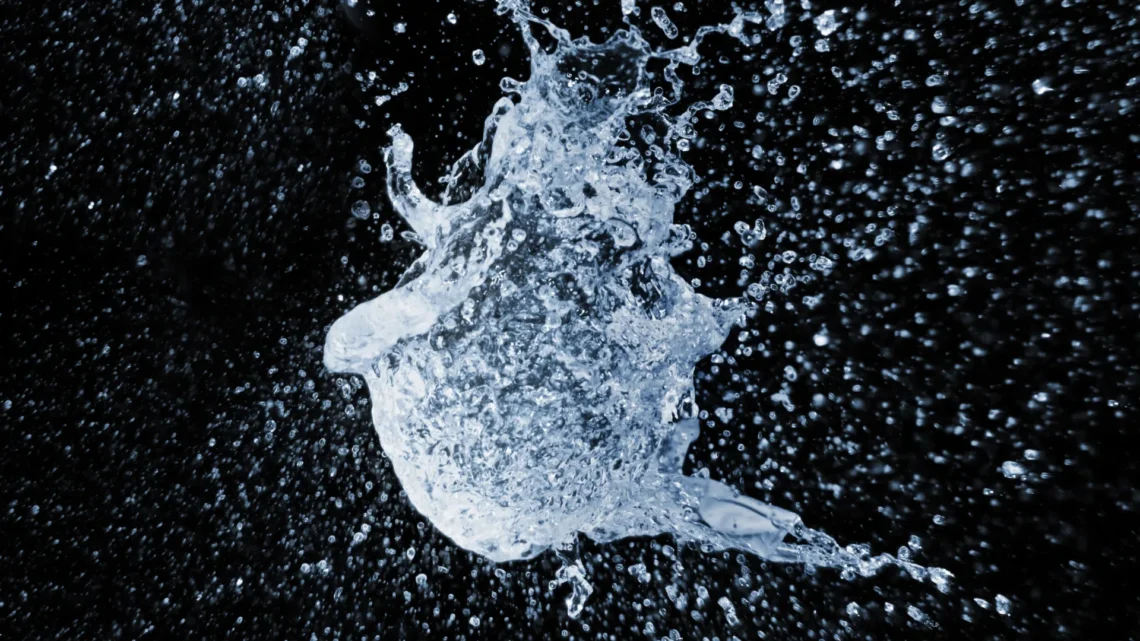Water, one of Earth’s most ubiquitous substances, still holds many mysteries that scientists are eager to unravel. When water is confined in extremely small spaces—like certain proteins, minerals, or artificial nanomaterials—it behaves in ways significantly different from its liquid form. These unique behaviors are crucial for various natural and technological processes, including controlling ion flow through cell membranes and influencing nanofluidic systems.
One particularly fascinating yet poorly understood state of confined water is known as the ‘premelting state.’ In this unusual phase, water seems to hover between freezing and melting, defying simple classification as either a liquid or solid. However, studying the premelting state and other behaviors of confined water has proven challenging. While techniques such as X-ray diffraction can help pinpoint atomic positions, they lack the sensitivity required to observe the rapid rotational movements of hydrogen atoms and individual water molecules.
In a groundbreaking study, Professor Makoto Tadokoro, along with Lecturer Fumiya Kobayashi and first-year PhD student Tomoya Namiki from the Department of Chemistry at Tokyo University of Science in Japan, shed light on the enigmatic properties of confined water. Their research, published online in the Journal of the American Chemical Society on August 27, 2025, details how they employed static solid-state deuterium nuclear magnetic resonance (NMR) spectroscopy to explore the dynamics of water confined within hydrophilic nanopores of a molecular crystal, identifying the premelting state as a new phase of water.
To conduct their experiments, the team created hexagonal rod-like crystals featuring quasi-one-dimensional channels with nanopores approximately 1.6 nm in diameter, which they filled with heavy water (D2O). By measuring the NMR spectra of a single crystal of {[Co(D2bim)3](TMA).20D2O}n at room temperature, the researchers confirmed a hierarchical, three-layered structure in the water molecules trapped inside. The unique peaks in the spectra aligned with the distinct movements and hydrogen-bonding interactions of these confined water molecules, providing strong evidence of a multi-layered organization. Remarkably, water in these nanopores freezes into a different structure than bulk ice and initially melts through a distorted hydrogen-bonded arrangement, leading to the emergence of the premelting state.
To investigate the premelting state, the researchers gradually heated the crystal from a low temperature, transitioning the water from solid to liquid. They noticed significant changes in the NMR spectra, confirming a phase transition into the premelting state and revealing two seemingly contradictory conditions. “The premelting state includes the melting of incompletely hydrogen-bonded H2O before the fully frozen ice structure starts to melt during heating. It essentially represents a unique phase of water where frozen H2O layers coexist with slowly moving H2O,” says Prof. Tadokoro.
The researchers measured the spin-lattice relaxation time to assess the rotational mobility of the heavy water molecules within this new phase. Although the activation energy for the premelting state differed significantly from that of bulk ice, the correlation time was remarkably similar to that of bulk liquid water. In simpler terms, while the positions of the water molecules were relatively stable, akin to a solid, their rotational activities were incredibly swift and liquid-like.
These findings collectively contribute to a deeper understanding of how water behaves under extreme confinement. They illuminate essential structural and dynamic aspects that are vital for grasping how water and ions move through biological proteins and membranes. Looking ahead, this knowledge could pave the way for innovative applications. “By designing new ice network structures, we may enable the storage of energetic gases like hydrogen and methane and create water-based materials similar to artificial gas hydrates,” explains Prof. Tadokoro. Controlling water’s freezing properties based on the structure of ice could lead to new, cost-effective, and safe hydrosphere materials.
Ultimately, this research highlights that even a substance as commonplace as water harbors fundamental secrets still waiting to be uncovered.
This work was supported by JSPS KAKENHI Grant-in-Aid for Scientific Research (B) JP23K26672 and JSPS KAKENHI Grant-in-Aid for Early-Career Scientists JP23K13767 from the Ministry of Education, Culture, Sports, Science, and Technology, Japan.
Summary: A recent study led by researchers from Tokyo University of Science explored the intriguing properties of confined water, focusing on a unique ‘premelting state.’ Their findings enhance our understanding of water dynamics under extreme confinement and have potential applications in materials science, including the storage of gases and the development of new water-based materials.





